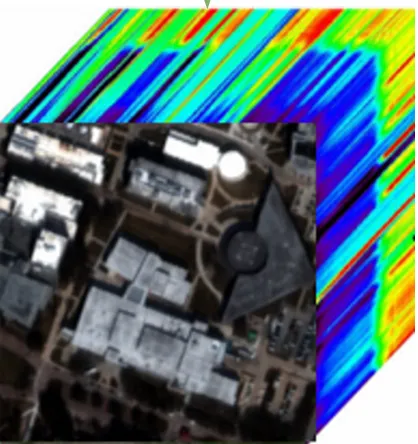Revolutionizing Hyperspectral Imaging: Discover SpectraLift's Groundbreaking Fusion Technology

The latest research from the University of Massachusetts introduces SpectraLift, a novel framework poised to transform hyperspectral image processing. This fully self-supervised spectral-inversion network makes significant strides in resolving the long-standing issue of optimizing spatial and spectral resolution in hyperspectral images (HSI), a crucial advancement for fields ranging from remote sensing to medical imaging.
The Challenge of Hyperspectral Imaging
Hyperspectral imaging allows us to capture detailed information across hundreds of spectral bands, delivering profound insights into the materials and features of a scene. However, the technology faces a significant trade-off; traditional HSI sensors often compromise spatial detail for rich spectral information. This limitation blurs small features and reduces classification accuracy, rendering many applications ineffective.
To tackle this issue, researchers have sought to merge low-spatial-resolution hyperspectral images (LR-HSI) with high-spatial-resolution multispectral images (HR-MSI). Yet, state-of-the-art methods often demand precise calibration of sensor parameters, which are frequently impractical in real-world situations. SpectraLift stands out by utilizing a physics-guided methodology that eliminates the need for complex calibrations.
The Innovative Approach of SpectraLift
At the heart of SpectraLift is its self-supervised design. Rather than relying on often vast amounts of labeled training data, the framework employs the multispectral sensor’s Spectral Response Function (SRF). SpectraLift generates synthetic low-spatial-resolution multispectral images (LR-MSI) through this SRF, training a lightweight per-pixel multi-layer perceptron (MLP) to accurately predict high-resolution hyperspectral outputs.
This approach enables SpectraLift to effectively learn and invert spectral compression without the need for extensive supervision or point spread function calibration. By minimizing a specific spectral reconstruction loss, the model is trained to recover detailed spatial structures from LR-HSI and HR-MSI pairings, achieving remarkable results across various benchmarks.
Outstanding Performance and Efficiency
Extensive tests demonstrate that SpectraLift not only converges quickly—often in a matter of minutes—but also outperforms conventional methods on crucial quality benchmarks such as Peak Signal-to-Noise Ratio (PSNR), Structural Similarity Index Measure (SSIM), and Root Mean Squared Error (RMSE). Its efficiency and lightweight design make it suitable for fast, real-time applications, an essential requirement for real-world imaging tasks.
Moreover, the model has shown robustness against variations in spatial blur and resolution, significantly enhancing its practicality for use in uncontrolled environments. The significance of preserving spectral fidelity while maintaining excellent spatial detail is underscored by its ability to deliver interpretable results, shedding light on the typical “black-box” criticisms often levied at complex deep learning models.
A Summary of SpectraLift’s Contributions
SpectraLift represents a crucial advancement in hyperspectral imaging technology. By shifting the paradigm towards physics-guided self-supervision and light-weight computation, this new method opens the door to more efficient and effective image processing in various fields. The implications for remote sensing, environmental monitoring, and medical diagnostics are substantial—offering the potential for clearer imagery and better decision-making processes based on reliable data.
With its promise of superior performance and interpretability, SpectraLift lays a robust foundation for future innovations in fusion models designed for hyperspectral image super-resolution.